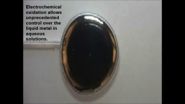(Press-News.org) CAMBRIDGE, Mass. (September 15, 2014) – The so-called central dogma of molecular biology—that DNA makes RNA which makes protein—has long provided a simplified explanation for how genetic information is deciphered and translated in living organisms.
In reality, of course, the process is vastly more complicated than the schema first articulated nearly 60 years ago by Nobel Laureate Francis Crick, co-discoverer of the DNA's double-helix structure. For one, there are multiple types of RNA, three of which—messenger RNA (mRNA), transfer RNA (tRNA), and ribosomal RNA (rRNA)—are essential for proper protein production. Moreover, RNAs that are synthesized during the process known as transcription often undergo subsequent changes, which are referred to as "post-transcriptional modifications."
Multiple such RNA modifications have been documented over the years, although the precise functions and significance of many of these have been shrouded in mystery. Among the most common post-transcriptional modifications is pseudouridylation, during which the base nucleoside uridine—the 'U' of the four base RNA nucleosides abbreviated as A, C, T, and U—has its chemical structure altered to form a molecule known as pseudouridine (ψ). To date, ψ has been found in abundance in tRNA, rRNA, and small nuclear or snRNA, but was thought not to exist in mRNA.
Until now.
Deploying sophisticated high-throughput sequencing technology, dubbed ψ-seq, a team of Whitehead Institute and Broad Institute researchers collaborated on a comprehensive, high-resolution mapping of ψ sites that confirms pseudouridylation does indeed occur naturally in mRNA. This somewhat surprising finding and the novel approach that led to it are revealed online this week in the journal Cell.
"This is really a better, more quantitative method to measure this modification, which is interesting in and of itself," says Douglas Bernstein, a co-first author of the Cell paper. "Finding the modification in mRNA was an unexpected bonus."
Bernstein, a postdoctoral researcher in the lab of Whitehead Institute Founding Member Gerald Fink, collaborated with postdoc Schragi Schwartz and Max Mumbach in the lab of Broad Institute Core Member Aviv Regev to orchestrate the ψ mapping in yeast. Having discovered pseudouridylation at dozens of sites in mRNA, the group set out to determine the functional role of the modification.
Knowing that pseudouridylation is catalyzed by enzymes known as pseudouridine synthases (PUS) the group looked for differences in mRNA pseudouridylation between a normal, wild-type yeast strain and a mutant strain with a PUS gene deleted. Intriguingly, heat shock dramatically increased the number of mRNA pseudouridylation sites in the normal strain but not in the mutant strain. Further, the group found that pseudouridylated genes were expressed at roughly 25% higher levels in the wild type strains than in the genetically modified strains.
Taken together, these findings suggest that heat shock activates a dynamic pseudouridylation program in yeast that may lead to beneficial outcomes for the organism, perhaps by increasing mRNA stability under adverse conditions.
While the research begins to outline a role for pseudouridylation of mRNA in yeast, its methodology and findings are likely to have implications in humans as well. As part of this work, the scientists performed ψ-seq on a line of human cells as well, finding remarkable similarity in mRNA pseudouridylation sites between human and yeast cells. Notably, a number of human diseases, including dyskeratosis congenita, which is characterized by a predisposition to cancer and bone marrow failure, are associated with mutations in PUS genes, suggesting that ψ-seq may have applications in uncovering the significance of RNA pseudouridylation in human pathologies.
INFORMATION:
This work is supported by the National Institutes of Health (grants GM035010 and 1F32HD075541-01), the National Human Genome Research Institute (grants P50HG006193 and U54HG003067), the Howard Hughes Medical Institute, Broad Institute Funds, the Marie Curie IOF, and the Swiss National Science Foundation.
Written by Matt Fearer
Gerald Fink's primary affiliation is with Whitehead Institute for Biomedical Research, where his laboratory is located and all his research is conducted. He is also a professor of biology at Massachusetts Institute of Technology.
Full Citation:
"Transcriptome-wide Mapping Reveals Widespread Dynamic-Regulated Pseudouridylation of ncRNA and mRNA"
Cell, September 11, 2014 (online)
Schraga Schwartz (1), Douglas A. Bernstein (2), Maxwell R. Mumbach (1), Marko Jovanovic (1), Rebecca H. Herbst (1,3), Brian X. Leo´n-Ricardo (1,4) Jesse M. Engreitz (1), Mitchell Guttman (5) Rahul Satija (1), Eric S.Lander (1,3,6) Gerald Fink (2,6), and Aviv Regev (1,6,7)
1. Broad Institute of MIT and Harvard, Cambridge, MA 02142, USA
2. Whitehead Institute for Biomedical Research, Cambridge, MA 02142, USA
3. Department of Systems Biology, Harvard Medical School, Boston, MA 02114, USA
4. Department of Biology, University of Puerto Rico, Rio Piedras Campus, San Juan 00931, Puerto Rico
5. Division of Biology and Biological Engineering, California Institute of Technology, Pasadena, CA 91125, USA
6. Department of Biology, Massachusetts Institute of Technology, Cambridge, MA 02139, USA
7. Howard Hughes Medical Institute, 4000 Jones Bridge Road, Chevy Chase, MD 20815, USA
Scientists discover RNA modifications in some unexpected places
2014-09-15
ELSE PRESS RELEASES FROM THIS DATE:
Study first to use brain scans to forecast early reading difficulties
2014-09-15
UC San Francisco researchers have used brain scans to predict how young children learn to read, giving clinicians a possible tool to spot children with dyslexia and other reading difficulties before they experience reading challenges.
In the United States, children usually learn to read for the first time in kindergarten and become proficient readers by third grade, according to the authors. In the study, researchers examined brain scans of 38 kindergarteners as they were learning to read formally at school and tracked their white matter development until third grade. ...
'Femme fatale' emerald ash borer decoy lures and kills males
2014-09-15
An international team of researchers has designed decoys that mimic female emerald ash borer beetles and successfully entice male emerald ash borers to land on them in an attempt to mate, only to be electrocuted and killed by high-voltage current.
"Our new decoy and electrocution process may be useful in managing what the U.S. Department of Agriculture Forest Service claims to be the most destructive forest pest ever seen in North America," said Michael Domingue, postdoctoral fellow in entomology, Penn State.
According to the Forest Service, the emerald ash borer was ...
Researchers control surface tension to manipulate liquid metals
2014-09-15
VIDEO:
Liquid metals have very large surface tensions that causes them to assume a spherical shape. Researchers have shown that the deposition of a surface oxide lowers the surface tension...
Click here for more information.
Researchers from North Carolina State University have developed a technique for controlling the surface tension of liquid metals by applying very low voltages, opening the door to a new generation of reconfigurable electronic circuits, antennas and other ...
Neuroscientists identify key role of language gene
2014-09-15
CAMBRIDGE, MA -- Neuroscientists have found that a gene mutation that arose more than half a million years ago may be key to humans' unique ability to produce and understand speech.
Researchers from MIT and several European universities have shown that the human version of a gene called Foxp2 makes it easier to transform new experiences into routine procedures. When they engineered mice to express humanized Foxp2, the mice learned to run a maze much more quickly than normal mice.
The findings suggest that Foxp2 may help humans with a key component of learning language ...
Network measures predict neuropsychological outcome after brain injury
2014-09-15
Cognitive neuroscience research has shown that certain brain regions are associated with specific cognitive abilities, such as language, naming, and decision-making.
How and where these specific abilities are integrated in the brain to support complex cognition is still under investigation. However, researchers at the University of Iowa and Washington University in St. Louis, Missouri, believe that several hub regions may be especially important for the brain to function as an integrated network.
In research published online Sept. 15 in the Early Edition of the Proceedings ...
Cells simply avoid chromosome confusion
2014-09-15
Reproductive cell division has evolved a simple, mechanical solution to avoid chromosome sorting errors, researchers report in the Sept. 11 Science Express.
This natural safeguard prevents incorrect chromosome counts and misalignments that lead to infertility, miscarriage, or congenital conditions.
"Mistakes during reproductive cell division cause these problems, but what exactly goes wrong is often not understood," said Adele Marston of the Wellcome Trust Center for Cell Biology at the University of Edinburgh in Scotland and lead author of the study. Understanding ...
NASA's TRMM satellite sees Hurricane Odile strike Baja California
2014-09-15
VIDEO:
This animation of NOAA's GOES-West satellite imagery from Sept. 13 through Sept. 15 shows Hurricane Odile's movement and landfall near Cabo San Lucas on Mexico's Baja California. TRT 0:42...
Click here for more information.
NASA's Tropical Rainfall Measuring Mission satellite known as TRMM captured data on powerful Hurricane Odile revealing heavy rainfall from powerful thunderstorms as it made landfall in Baja California. Odile tied a record for strongest hurricane to hit ...
IU study: Combining epilepsy drug, morphine can result in less pain, lower opioid doses
2014-09-15
INDIANAPOLIS -- Adding a common epilepsy drug to a morphine regimen can result in better pain control with fewer side effects. Moreover, the combination can reduce the dosage of the opioid needed to be effective, according to a team of pain researchers at Indiana University.
The result could bring significant relief to many patients with neuropathic pain, a difficult-to-treat condition often felt in the arms and legs and associated with nerve tissue damage.
"There is a huge unmet need for better treatments for neuropathic pain," said Fletcher A. White, Ph.D., the Vergil ...
'Squid skin' metamaterials project yields vivid color display
2014-09-15
The quest to create artificial "squid skin" -- camouflaging metamaterials that can "see" colors and automatically blend into the background -- is one step closer to reality, thanks to a breakthrough color-display technology unveiled this week by Rice University's Laboratory for Nanophotonics (LANP).
The new full-color display technology uses aluminum nanoparticles to create the vivid red, blue and green hues found in today's top-of-the-line LCD televisions and monitors. The technology is described in a new study that will be posted online this week in the Early Edition ...
Researchers discover new producer of crucial vitamin
2014-09-15
New research has determined that a single group of microorganisms may be responsible for much of the world's vitamin B12 production in the oceans, with implications for the global carbon cycle and climate change.
Although vitamin B12 is an essential molecule required by most life on this planet, it is only produced by a relatively small group of microorganisms because it is so large and complex. For humans, vitamin B12 plays a key role in maintaining the brain and nervous systems, as well as DNA synthesis in cells throughout the body.
Professors Andew Doxey and Josh ...



